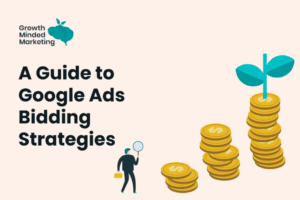Table of Contents
Togglehow to use google ads for business
Introduction: In today’s digital age, and know about how to use google ads for businesss advertising your business online is essential for reaching your target audience effectively. Google Ads, formerly known as Google AdWords, is one of the most powerful platforms for promoting your products or services to potential customers. However, mastering Google Ads requires more than just creating a campaign and hoping for the best. In this comprehensive guide, we’ll explore everything you need to know to use Google Ads effectively and drive tangible results for your business.
Understanding Google Ads: Google Ads is an online advertising platform developed by Google, where advertisers bid to display brief advertisements, service offerings, product listings, or videos to web users. These ads can appear on Google’s search engine results pages (SERPs), on websites within the Google Display Network, or on YouTube videos. and know about how to use google ads for business. Google Ads operates on a pay-per-click (PPC) model, where advertisers bid on keywords relevant to their target audience. When a user searches for a term related to your business, Google runs an auction to determine which ads to display and in what order. Factors such as bid amount, ad relevance, and landing page experience influence ad placement.
Setting Goals: Before diving into Google Ads, it’s crucial to define your advertising goals. Whether you aim to increase website traffic, generate leads, boost sales, or raise brand awareness, clearly outlining your objectives will help shape your campaign strategy and measure success accurately.


Keyword Research: Keywords are the foundation of any successful Google Ads campaign. Conduct thorough keyword research to identify relevant terms and phrases that your target audience is likely to use when searching for products or services like yours. Tools like Google Keyword Planner can assist in discovering high-volume keywords with reasonable competition levels. Keyword research is a continuous process that involves identifying not only high-volume keywords but also long-tail keywords that reflect specific user intent. Long-tail keywords often have lower competition and higher conversion rates. Additionally, negative keywords—terms you don’t want your ads to show for—help refine targeting and improve ad relevance.


Creating Compelling Ads: Crafting compelling ad copy is essential for capturing the attention of potential customers and driving clicks. Write clear, concise, and persuasive ad copy that highlights the unique selling points of your offerings. Incorporate relevant keywords into your headlines and descriptions to improve ad relevance and quality score. In addition to compelling copy, consider utilizing ad extensions to provide additional information and encourage clicks. Extensions like site links, callouts, and structured snippets enhance ad visibility and provide users with more reasons to engage with your ad. Experiment with ad formats, such as responsive search ads, to automatically optimize ad variations for better performance.
Targeting the Right Audience: Google Ads offers various targeting options to help you reach your ideal audience. Utilize demographic targeting, location targeting, device targeting, and audience targeting to ensure your ads are shown to the most relevant users. Refine your targeting parameters based on factors such as age, gender, income level, interests, and browsing behavior. Implement Google Analytics goals or e-commerce tracking to measure the full impact of your advertising efforts on website interactions and transactions. Analyze attribution models to understand the customer journey and allocate credit to touchpoints along the path to conversion. Use data-driven attribution to optimize bidding and allocate budget based on the most influential channels and interactions.
how to use google ads for business
Optimizing Landing Pages: A well-designed landing page is critical for converting ad clicks into valuable actions, such as purchases or sign-ups. Ensure that your landing pages are optimized for both relevance and conversion by aligning them closely with your ad messaging and including clear calls-to-action (CTAs). Conduct A/B testing to refine your landing page elements and improve conversion rates over time. Ensure landing pages are optimized for mobile devices and load quickly to prevent users from bouncing. Conduct user experience (UX) testing to identify any friction points in the conversion process and streamline the user journey. Implement personalization techniques, such as dynamic content and tailored messaging, to create a more personalized experience for visitors
Monitoring and Optimization : Continuous monitoring and optimization are key to maximizing the performance of your Google Ads campaigns. Regularly review your campaign metrics, such as click-through rate (CTR), conversion rate, and return on ad spend (ROAS), to identify areas for improvement. Make data-driven adjustments to your bidding strategy, ad creatives, targeting settings, and keyword selection to enhance campaign effectiveness and ROI. Regularly review performance metrics at the campaign, ad group, and keyword levels to identify trends and opportunities for improvement. Leverage automated bidding strategies, such as target CPA or maximize conversions, to optimize bidding and achieve your desired campaign objectives more efficiently. Experiment with ad scheduling to adjust bids based on the time of day or day of the week when your target audience is most active.
Budgeting and Bidding Strategy: Effectivebudgeting and bidding strategy are crucial for achieving your advertising goals within your allocated budget. Determine your daily or monthly ad spend based on your overall marketing objectives and financial resources. Choose the appropriate bidding strategy—whether it’s cost-per-click (CPC), cost-per-acquisition (CPA), or return on ad spend (ROAS)—that aligns with your campaign goals and budget constraints. Start with a modest budget and gradually increase it as you gain insights into campaign performance and ROI. Allocate budget based on the relative performance of campaigns, focusing more resources on high-performing initiatives. Implement bid adjustments for devices, locations, and demographics to optimize bids for different segments of your target audience.


Tracking and Measurement: Tracking conversions and attributing them back to your Google Ads campaigns is essential for measuring success and optimizing performance. Implement conversion tracking using Google Analytics or Google Tag Manager to accurately measure the impact of your ads on key actions, such as purchases, form submissions, or phone calls. Analyze conversion data to identify top-performing campaigns, keywords, and audience segments, and allocate your budget accordingly. Implement Google Analytics goals or e-commerce tracking to measure the full impact of your advertising efforts on website interactions and transactions. Analyze attribution models to understand the customer journey and allocate credit to touchpoints along the path to conversion. Use data-driven attribution to optimize bidding and allocate budget based on the most influential channels and interactions.
how to use google ads for business
Conclusion: Google Ads can be a powerful tool for driving business growth and reaching your target audience effectively. By following the strategies outlined in this guide, you can create and optimize Google Ads campaigns that deliver tangible results for your business. Remember to continually test, iterate, and refine your approach based on data-driven insights to stay ahead of the competition and maximize your advertising ROI. By incorporating these additional insights, businesses can develop a more comprehensive understanding of how to leverage Google Ads effectively to achieve their marketing objectives.
